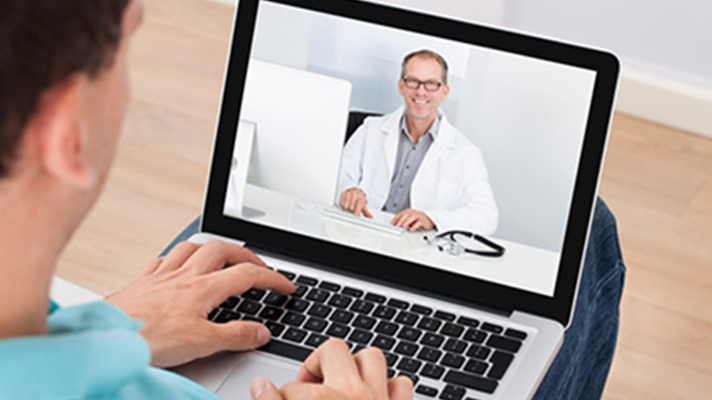As Adena Health System continues looking for creative ways to manage current and potential surges in COVID-19 patient volumes, a new program that may have relevance for patient care even beyond the pandemic launched last week.
Adena at Home is utilizing patient navigators and home health nurses, coupled with remote patient telemonitoring, to provide an option for moving recovering Coronavirus patients transitioning to less severe symptoms out of much-needed COVID unit beds at Adena Regional Medical Center and into their own homes.
“This program is geared towards expanding our expertise beyond the four walls of the hospital and managing COVID-19 patients as much as possible in their own home environment,” said Dr. Jashanpreet Singh, Chief of Inpatient Operations. “Our goal is to pull some of the patients from that unit into this program and send them home a little earlier than they would have eventually gone, but having a dedicated care team of remote patient monitoring nurses and a team of clinicians led by (Chief Clinical Officer) Dr. Kirk Tucker and Julie Stone NP who are going to be following these patients in their home environment.”
Last Tuesday’s launch of the program is the latest in an effort to decompress bed demand in the COVID unit at ARMC at a time patient surges are more frequently reaching or exceeding unit capacity. A few weeks ago, Adena Greenfield Medical Center created an eight-room unit to accept COVID-19 patients who are recovering but not yet ready to care for themselves at home, and just recently Adena Pike Medical Center also began accepting COVID-19 patients.
Adena at Home plays off that same philosophy, but designates those same types of patients to recuperate at home. It also builds off the foundation of existing Home Health and Population Health care coordination efforts.
The program is being implemented in phases. The first phase would focus on patients currently recuperating in the COVID unit on a clear path to recovery. Upon discharge, patients would be provided with a kit containing such things an iPad with video and messaging capability, pulse oximeter, blood pressure cuff, thermometer and tools for monitoring symptoms such as a shortness of breath stoplight tool, anxiety tool and COVID symptom tracker form. Educational materials tackling such topics as how to isolate at home and managing symptoms at home will be part of the packet.
With those tools, patients can provide necessary information for nurses and clinicians monitoring their condition. They will get daily registered nurse phone or video status call checks for seven to 10 days depending on symptoms, as well as daily virtual rounds led by Dr. Tucker and Stone to discuss whether any changes in the treatment protocol or medication need to be made and to just speak with the patient about their condition. Patients will also have access to 24/7 support from a Population Health or Adena Home Health nurse in case they have questions or concerns overnight.
After the seven- to 10-day period, care of the patient will transition back to the patient’s primary care provider with updated clinical notes and medication information.
Patients will not be required to take part in the Adena at Home option, and their families will be included in the decision-making process. As of Monday, 12 patients had been enrolled.
“One of the criteria is the patient’s and family members’ willingness to be part of the program,” Dr. Singh said. “Willingness and engagement are very important. Consider this as a very important step in patient-centered medical care because you are really engaging the patient and their family into the decision-making in their health and recovery process.”
The second phase of the program would involve patients presenting with symptoms at Urgent Cares or the Emergency Department. If they are determined not to require hospitalization but are showing serious enough symptoms to require home monitoring, they would be sent home with a treatment protocol kit and access to the same remote nursing and clinical care as those in phase one.
The third phase would create the same situation for patients presenting with symptoms at primary care offices. Expansion to the second and third phases will be determined by the severity of existing pandemic conditions.
Dr. Singh and Bambi Huffman, vice president of care coordination, said there are several advantages to an approach that has enjoyed success at other health systems that have tried it, including the psycho-social advantages to the patient being able to finish their recovery in a familiar home environment.
The program shows great potential for outlasting the COVID-19 pandemic.
“I think from a strategic vision standpoint, COVID has shown us that even though right now we are operating under a surge umbrella, this modality and pathway of treatment for our patients– is going to be the wave of the future,” Dr. Singh said. “Once COVID is under control and we are out of the pandemic, we can really build on these programs in the future and promote them toward patients with chronic conditions like heart failure, helping us reduce re-admissions and manage them better in their own home with patient-centered decision making .”
